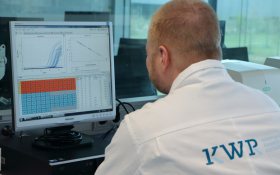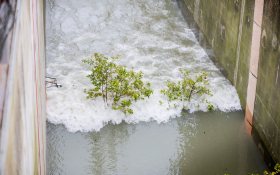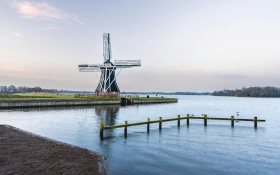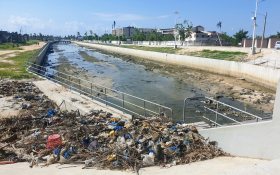World's leading coastal scientists join efforts to improve forecasting of storm surges
The Australian Research Council has granted a consortium of Unesco-IHE and the University of Queensland to develop and validate an innovative wind stress model to obtain robust storm surge forecasts.
The consortium will receive 0.5 million AUD for a periode of three years (2013-2015).
Accurate forecasting of storm surge levels is required for disaster management and the design of coastal defenses, but existing models have significant errors.
In collaboration with world leading research partners, this study will acquire a set of unique field data to better quantify the physical processes governing storm surge generation.
Current adjusting of models by hindcasts
Associate professor in coastal engineering Rosh Ranasinghe at Unesco-IHE: "I am very excited about this project and am thrilled to have won this grant together with some of the world's leading coastal scientists. The under-prediction of storm surge in existing models has been a serious problem for the last 5 decades. Engineers and scientists have had to resort to unrealistically adjusting calibration co-efficients in their models to obtain good data/model comparisons for storm surge hindcasts."
Massive impact of climate change
Ranasinghe doubts the method of hindcasting will lead to accurate forecasts: "Most likely not. We cannot continue like this, especially in view of the massive impact climate change will have on storm surge. For example, in South-East Australia, it is anticipated that a storm surge that occurred only once every 10 years during the 20th century, will occur every 10 days by 2100!"
According to Rosh Ranasinghe this is a very dangerous situation that might lead to huge socio-economic losses.

Storm surge produced by super storm Sandy caused a breach near Mantoloking on one of the barrier island of the New Jersey shore.
Understanding the physics
In this project the consortium aims to solve this problem by doing it the hard way: understanding the physics governing storm surge generation via detailed field measurements. "Once we understand the physics well, we can improve our models", says Rosh Ranasinghe.
Field work in Australia and the Netherlands
The field work will be done at the Gold coast in Australia and at Noordwijk in The Netherlands. The field work in the Netherlands will also be linked to the 5 year field campaign that is being undertaken by TU Delft under the leadership of professor Marcel Stive as part of the ERC funded NEMO project, of which Dr. Ranasinghe is Co-Principal Investigator.
This news items was originally published on the website of Unesco-IHE.
Rosh Ranasinghe explains his recent work on a model to predict the changes of an inland basin along an interrupted coastline in case of sea level rise.
More information
Unesco-IHE
Coastal Systems & Engineering and Port Development
Delft, the Netherlands
r.ranasinghe@unesco-ihe.org
+31 15 215 1715
www.unesco-ihe.org
University of Queensland
Coastal Engineering Group
St. Lucia, Australia
+61 7 3365 3510
www.uq.edu.au/coastal
Australian Research Council
Canberra, Australia
+61 2 6287 6600
www.arc.gov.au
Nemo - Nearshore Monitoring and Modelling: Inter-scale Coastal Behavior
Technical University of Delft
Delft, the Netherlands
+31 15 27 89453
www.nemo.citg.tudelft.nl





